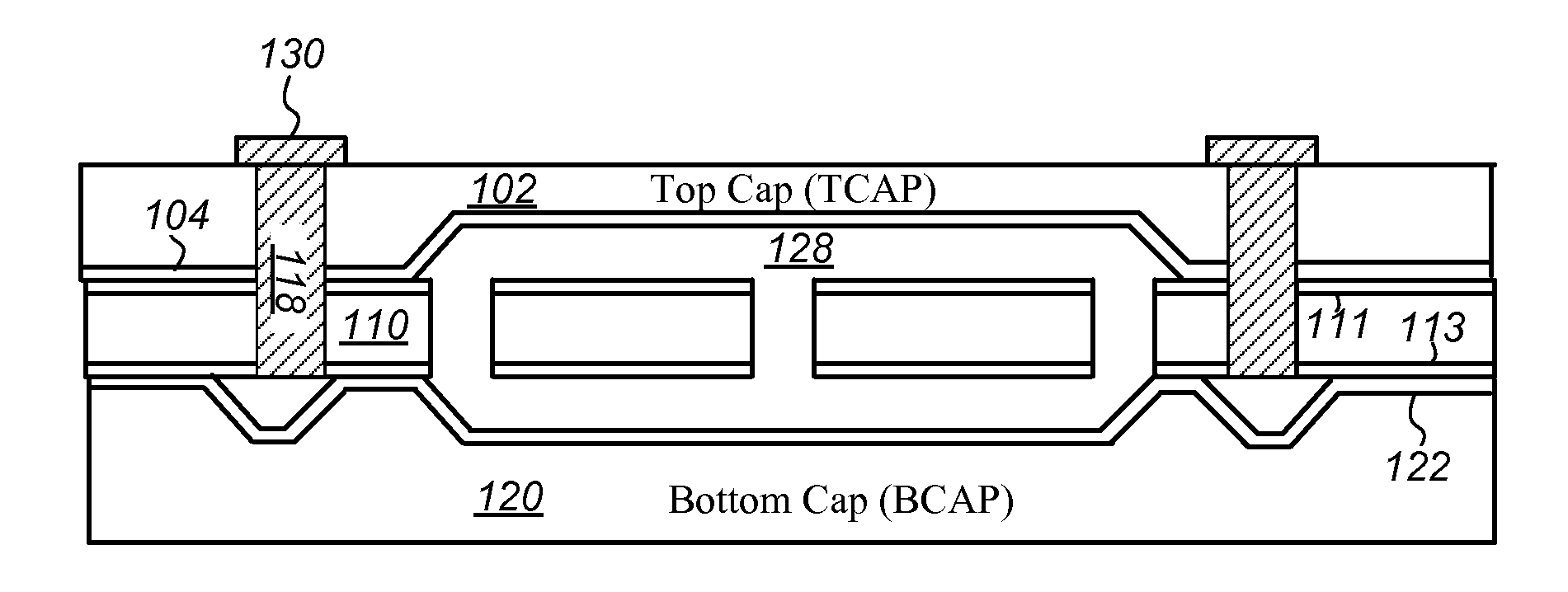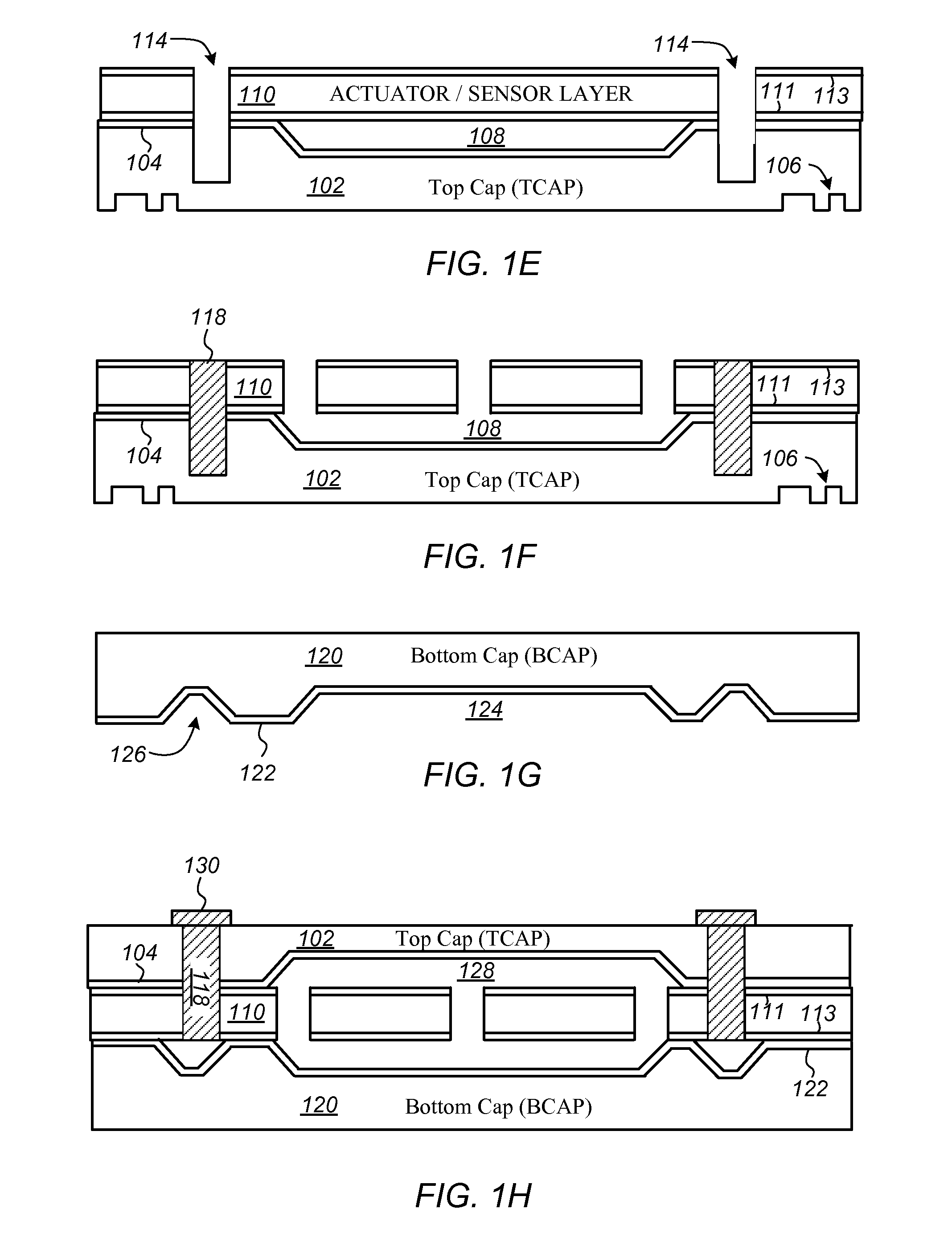Wafer Level Structures and Methods for Fabricating and Packaging MEMS
a technology of actuators and sensors, applied in the field of microelectromechanical systems, can solve the problems of expensive calibration and compensation techniques, cmos ic and mems, and neither the satisfaction of hybrid cmos/mems
- Summary
- Abstract
- Description
- Claims
- Application Information
AI Technical Summary
Problems solved by technology
Method used
Image
Examples
first embodiment
[0033]Referring to FIG. 3A, in a first embodiment the TASP™ or MEMS 300 includes a top cap 302 bonded to an actuator / sensor layer 304 using a bonding material 306, and a bottom cap 308 also bonded to the actuator / sensor layer using a bonding material 310 to form a hermetically sealed cavity 312 around a MEMS actuator or sensor at a wafer or substrate level. The MEMS 300 further includes silicon vias 314. In the embodiment shown, the silicon vias 314 do not extend fully gone thru the actuator / sensor layer 304, but rather stop on or in the actuator / sensor layer making electrical contact from the ball to the actuator layer. This can be accomplished by etching the silicon vias 314 from a top surface 316 of the top cap 302 to or partially into the actuator / sensor layer 304 bonded Thereto. It will be understood that MEMS can be fabricated up to this point by the method similar to that outlined in blocks 200 to 218 of FIG. 2 and described above. The structure of the MEMS 300 further differ...
second embodiment
[0034]Referring to FIG. 3B, in a second embodiment the TASP™ or MEMS 300 includes a top cap 302 bonded to an actuator / sensor layer 304 using a bonding material 306, and a bottom cap 308 also bonded to the actuator / sensor layer using a bonding material 310 to form a hermetically sealed cavity 312 around a MEMS actuator or sensor at a wafer or substrate level. The MEMS 300 further includes silicon vias 314, but differs from that of FIG. 1H in that the silicon vias 314 extend from the actuator / sensor layer 304 through the bottom cap 308 and electrically couple to pads 320 formed on a lower surface of the bottom cap.
[0035]Another method of fabricating and packaging a TASP™ or MEMS according to an alternative embodiment will now be described with reference to the block diagrams of FIGS. 4A-4J, and the flow chart of FIG. 5.
[0036]Referring to FIG. 4A and FIG. 5, the method begins with depositing directly on a first substrate 402 or on an insulating or dielectric material 403, such as silic...
third embodiment
[0057]Referring to FIG. 9C, in a third embodiment the MEMS 902 is directly electrically coupled and attached by WLCSP (wafer level chip-scale-package) solder balls 910 to the CMOS IC 904, which is electrically coupled and attached by wire-bonds 906 to the back-plane 908 in the QFN package.
PUM
 Login to View More
Login to View More Abstract
Description
Claims
Application Information
 Login to View More
Login to View More - R&D
- Intellectual Property
- Life Sciences
- Materials
- Tech Scout
- Unparalleled Data Quality
- Higher Quality Content
- 60% Fewer Hallucinations
Browse by: Latest US Patents, China's latest patents, Technical Efficacy Thesaurus, Application Domain, Technology Topic, Popular Technical Reports.
© 2025 PatSnap. All rights reserved.Legal|Privacy policy|Modern Slavery Act Transparency Statement|Sitemap|About US| Contact US: help@patsnap.com



